On Saint Luke’s day,
the oxen have leave to playTraditional proverb
Welcome, friends. I’m Kristin: a Pacific Northwest artist, mom, & farmer offering support for seasonal, local, liturgical living. Together, we’ll explore the agrarian heritage of the Church calendar and ideas of sacred time & sacred place.
Subscribe for free to receive reflections about once a month. If you’d like to go deeper, delve into all my posts here, and access my entire library of printables, please consider joining our community!
» Printable Resources
Keeping a liturgical Book of Hours binder helps me to distill all of the inspiration I find, so I can easily look to the elements that have been most inspiring and nurturing for our family & community.
Just in time for the Evangelist’s feast, here’s a Lukismas booklet to add to your binder - with a pretty cover page featuring watercolor art, followed by poetry, musings, history, spaces to record your own thoughts & respond to prompts…all illuminated by whimsical ink drawings.
My paid subscribers can find this (as well as lots of other printables) in the Scriptorium:
» Original Art
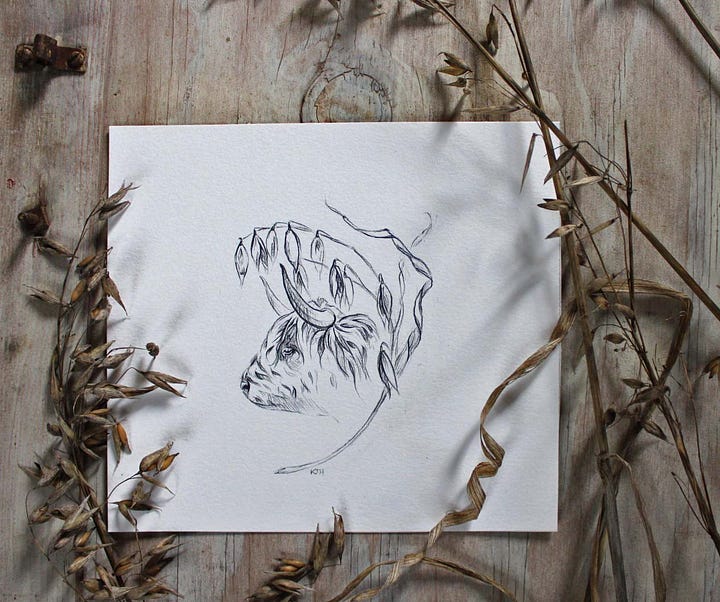
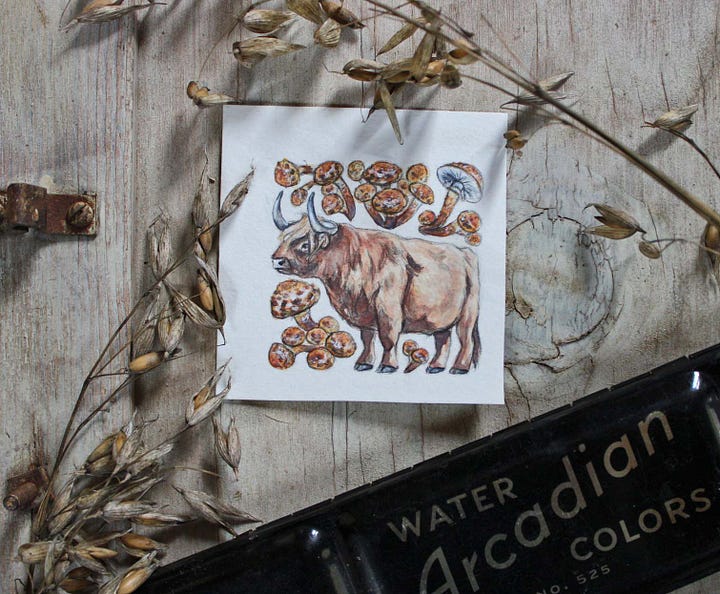
I’m offering up two original pieces inspired by the feast of St. Luke - one is a simple, crisp sketch, and the other is the watercolor illumination I painted for this month’s printable booklet.
You can find these in my Etsy shop!
LITTLE SUMMER: HOLY INTERRUPTION
“And around the throne, on each side of the throne, are four living creatures, full of eyes in front and behind: the first living creature like a lion, the second living creature like an ox, the third living creature with the face of a man, and the fourth living creature like an eagle in flight. And the four living creatures, each of them with six wings, are full of eyes all around and within, and day and night they never cease to say,
‘Holy, holy, holy, is the Lord God Almighty,
who was and is and is to come!’Revelation 4: 6-8 (ESV)
As the calendar tumbles toward Hallowtide, we pause to celebrate autumnal Lukismas, the feast of St. Luke.1 Evangelist, physician, and artist, St. Luke - our legendary winged ox2 - is thought to have been the author of the Gospel of Luke, as well as the Acts of the Apostles. In his work, we see God through the eyes of an artist-healer…perhaps the most fittingly poetic attributes for one of Jesus’ disciples.3
This time of year in our modern life, it’s easy to let days slip by and hinge on the “bigger” holidays yet to come, or on the onslaught of work ahead of us. Here on the farm, we’re knee-deep in our harvest festival season, busily trying to bridge the gap between production and preparation. Flood season is coming, after all, and the cows need to get off the wet pasture and into the barn.
But St. Luke, one of the architects of our faith tradition, pauses us and invites us to a holy interruption: his “Little Summer.”
A spell of warmer, dryer weather has often punctuated the slide toward winter this time of year: an interruption in rain that was dubbed “St. Luke’s Little Summer.” Farmers would look forward to this opportunity - never guaranteed, but always hoped for - to sow their winter grains.
Which makes me wonder: am I ready to look for opportunity in an interruption of pattern? Have I built an idol out of the illusion that my days deserve to be predictable? And, most pointedly…in seasons of struggle, do I have the imagination to see Luke’s Little Summer amidst my days, or am I closed down to it?
Culturally, we talk about possessiveness of money or material goods - but our tight grip on our time and our circumstances may be most nefarious.
“Quhilk nather cumis to port, nor cors,
Nor to the croft our toun besyde
Quhar mony ane was wont to ryde
At guit Sanct Lukis nobill fair
Quhair mony nobills did repair;
And for the wery wynter tyd
For ryddin horse did thame provyde
For thame and all their company…”Excerpt from a 15th/16th c. Old Scots poem by Sir Richard Maitland, printed in John Pinkerton’s Collection of Scottish Ballads (1786)
Though a challenge to read without translation, what we witness in Sir Richard’s poetry is lament: St. Luke’s Fair, once a grand experience, had fallen by the wayside by the 16th century. The aristocracy had stopped participating, and we’re given a litany of the trades that suffer as a result. The fraying of social fabric that had upheld these liturgical-social events left so many guilds, so many families, bereft.
St. Luke’s Fair was no longer seen as a holy interruption - but rather as an inconvenience to other pursuits.
Now, I fully realize and appreciate that everything must have its season, and it’s impossible to spread our time toward all the sundry things that call our attention: but this makes me think about the wider impacts of loss when traditions end their cycle. We can’t be responsible for upholding each and every beloved event or tradition in our sphere…but our presence, our time, makes a difference and casts a vote. Realizing that is impactful. I wonder if just that realization, in and of itself, can allow us to part from things with more grace - and take the leap of gifting our time and energy to the things we hope to sustain.
…to look for St. Luke’s Little Summer interrupting our patterns of expectations, interrupting our possession of time. And maybe, during times of hardship, to cultivate our imaginations: to be open to Little Summers during what feel like long winters.
OATS & OXEN
St. Luke’s tie to oxen - owed to imagery from Revelation, as well as the sacrificial tone in his Gospel - bears itself out in the agrarian traditions of his feast.
In the once grand gatherings of St. Luke Fairs, sale & trade of cattle, serving of beef roasts, and parade of horns were traditional festivities. The fair would open to the sound of a bullhorn being blown, and horns of all kinds - deer antlers, bovine horns, and more - were affixed to staffs and led through the fair. The guilds who held St. Luke as their patron were there with their wares, and these “Horn Fairs” eventually became quite raucous events (either that, or they fell out of fashion altogether).
This is an important time of year in the life of herdsmen - keeping animals through the winter is expensive, so animals were either butchered & their meat preserved, they were sold or traded, or they were overwintered. St. Luke is a fitting patron to greet the herdsman in the waning days of October.
Oats, cut earlier in the summer, were also a staple at Lukismas - and they were used with great intention and ceremony:
“Another ancient custom, for the observance of which Rutherglen has long been famous, is the baking of SOUR CAKES. ... About eight or ten days before St. Luke’s fair (for they are baked at no other time of the year), a certain quantity of oatmeal is made into dough, with warm water, and laid up in a vessel to ferment. Being brought to a proper degree of fermentation and consistency, it is rolled up into balls, proportionable to the intended largeness of the cakes. With the dough is commonly mixed a small quantity of sugar, and a little anise seed, or cinnamon. The baking is executed by women only; and they seldom begin their work till after sun-set, and a night or two before the fair. A large space of the house, chosen for the purpose, is marked out by a line drawn upon it. The area within is considered as consecrated ground: and is not, by any of the by-standers, to be touched with impunity. …
“This hallowed spot is occupied by six or eight women, all of whom, except the toaster, seat themselves on the ground, in a circular figure, having their feet turned towards the fire. Each of them is provided with a bakeboard, about two feet square, which they hold on their knees. The woman who toasts the cakes, which is done on a girdle suspended over the fire, is called the Queen, or Bride; and the rest are called her maidens…”
Excerpt from the History of Rutherglen & East Kilbride, Rev. David Ure (1793)
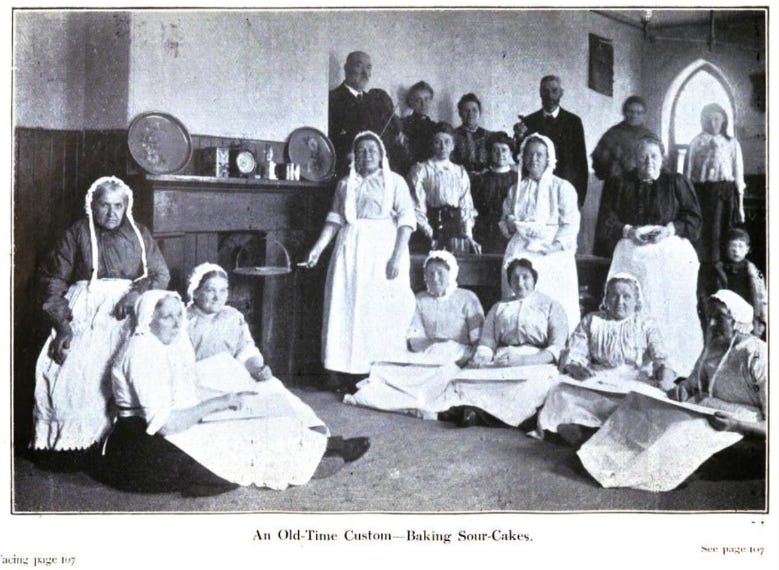
For our own part, our oats are few & far between this year; we planted them mixed with other cover crop, and after mowing them down, have used them for winter supplements to our pig & sheep feed (the pastures get mighty sparse during the winter months!)
So, although our critters will be partaking in St. Luke oats on his feast day, I’m just going to ponder this communal baking event for next year. I love the idea of many hands working alongside one another to bake what are, essentially, very small cakes (and often given away); each woman taking a turn with the dough would have a galvanizing effect on St. Luke’s feast day.
Mushrooms were also prevalent in Lukismas celebrations, since they’re so prevalent after the early Fall rains. For my own part, I don’t trust my foraging skills…but these little autumnal sprites seem like gifts from St. Luke, and we went in search of them. As our youngest said, tromping around the woods with me - “A whole VILLAGE of mushrooms, Mom!!”
And, indeed, there they were…unassuming, mysterious, and so varied in shape and color and texture, rising like perfect umbrellas from the rubble of dead leaves. Little Lukismas miracles dotting the forest floor or adding tiny, whimsical steps to decaying logs.
Like holy interruptions, yet again - forcing me to move my gaze from the path in front of me, and instead training me to be attentive to small, delightful surprises.
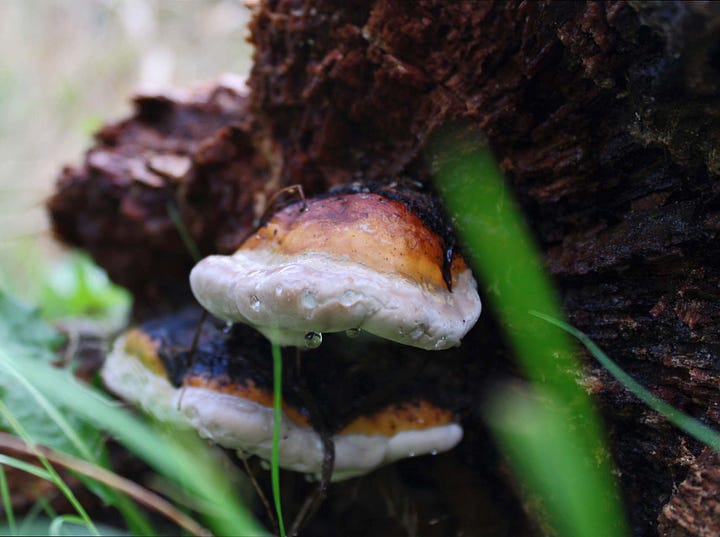
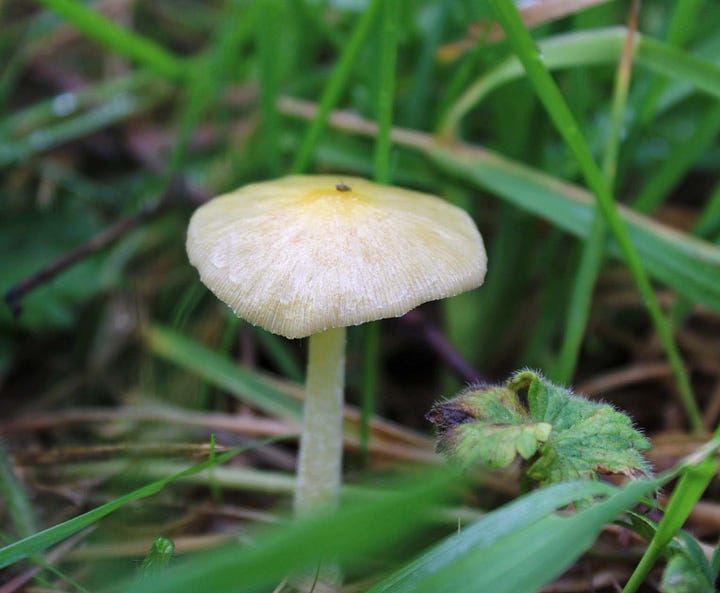
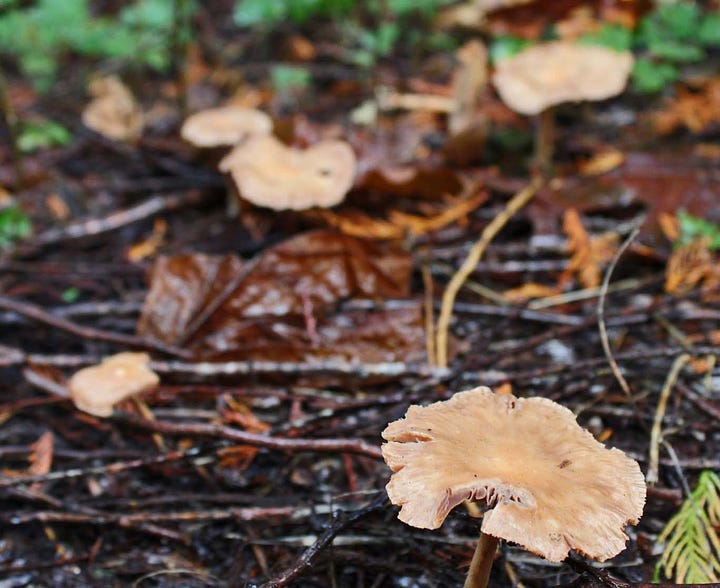
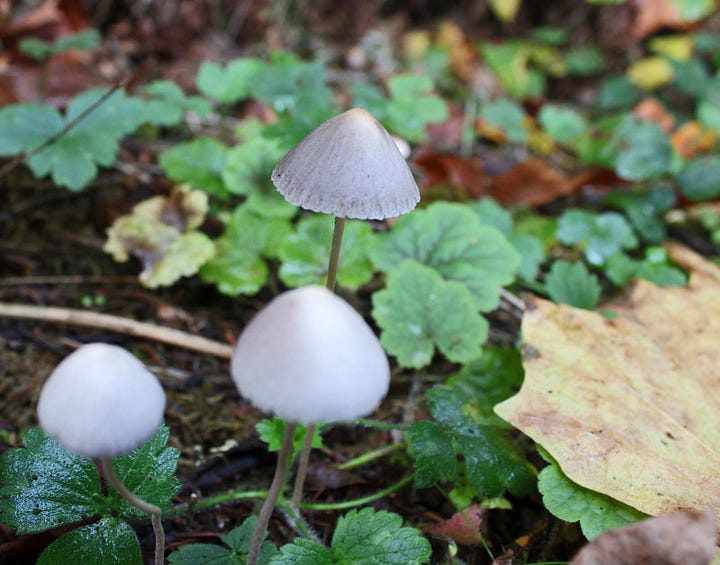
BENEDICTION
O JESU, O Redeemer,
Physician of the soul,
Receive, receive Thy people,
And cleanse and make them whole.For health, for strength, for healing,
The stream is never dry,
Whose fountain-head flows ceaseless
From holy Calvary.Excerpt from the Hymn for St. Luke’s Day, Rev. Gerard Moultrie (19th c).
I’d love to hear about your October. Has your Fall been invigorating? Has the waning light been a struggle? I find a mix of both to be true, and surely am now cued to pay attention for Little Summers!
We’ll be celebrating Lukismas with our Liturgical Life group, and I’ll be sure to share more about our gathering. In the meantime, wishing you & yours a merry Lukismas!
Pax vobis,
Kristin
P.S. Have you checked out our Fall book club selection?
If you’d like to make a one-time donation, I have a PayPal Tip Jar - please know that I’m so grateful for your monetary support, which really does help me continue to do this work that I’m so passionate about!
For those who are able to support a monthly or annual paid subscription, I offer occasional new printables, extra posts, and access to my whole library of printables: the Scriptorium. I’m so grateful for your generosity, which helps to support my work through the purchase of additional books for research, art supplies, and more!
For more reflections and perspectives on the liturgical year, please visit Signs + Seasons: a liturgical living guild!
The Old Scots language provides us with some really lovely terms for the Feast of St. Luke: Luxmas, Lukismas, Lukisday…
St. Luke’s historic portrayal as an ox reflects his emphasis on sacrifice (the ox being a sacrificial creature in earlier tradition).
Though not one of the Twelve, Luke is thought to have been one of the 70 disciples appointed by Jesus.


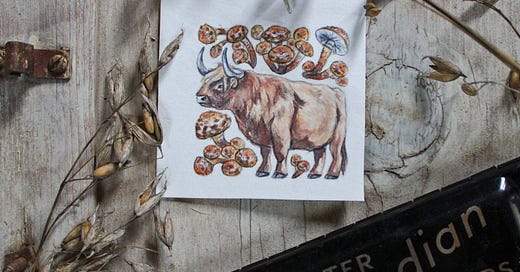



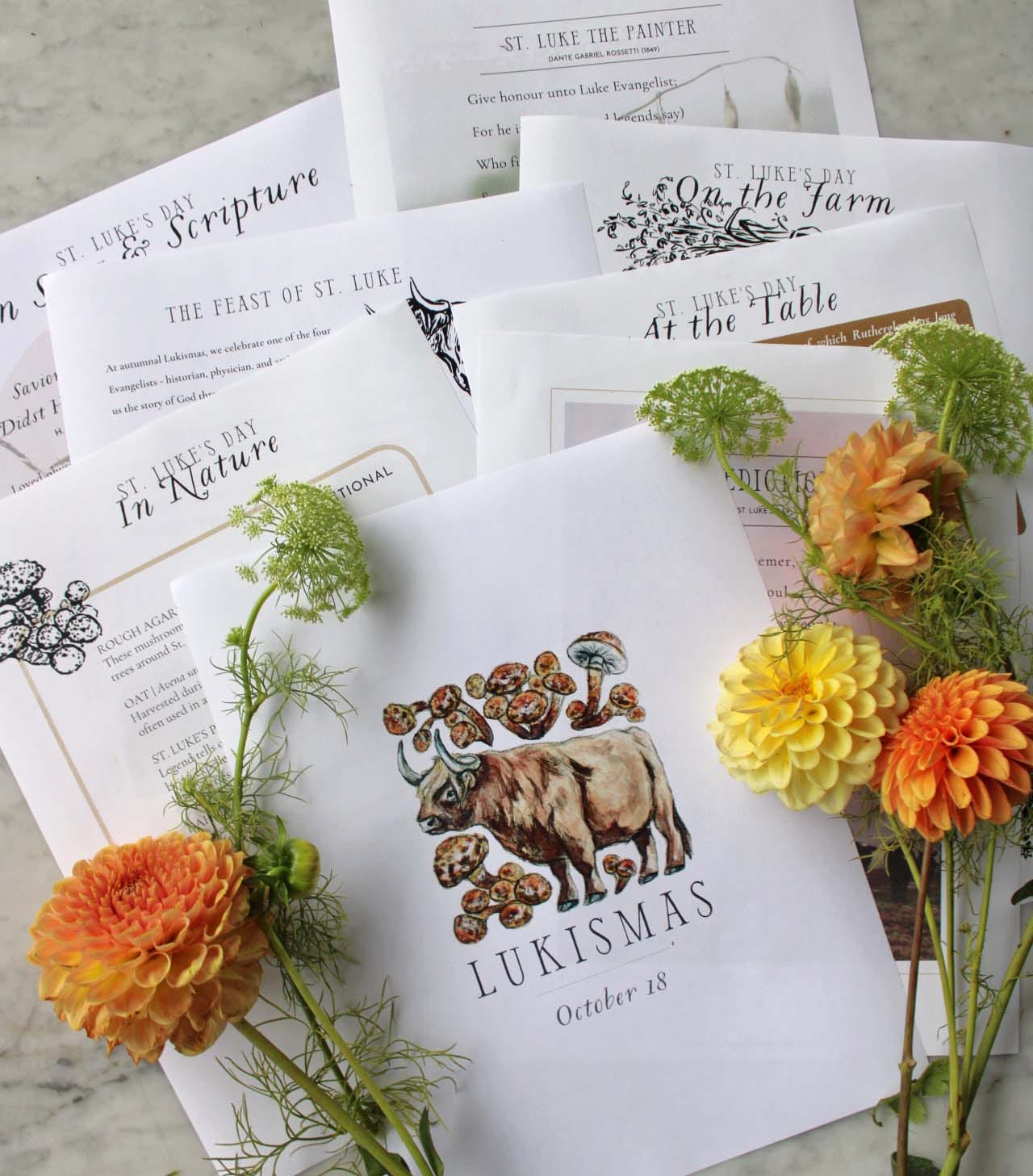
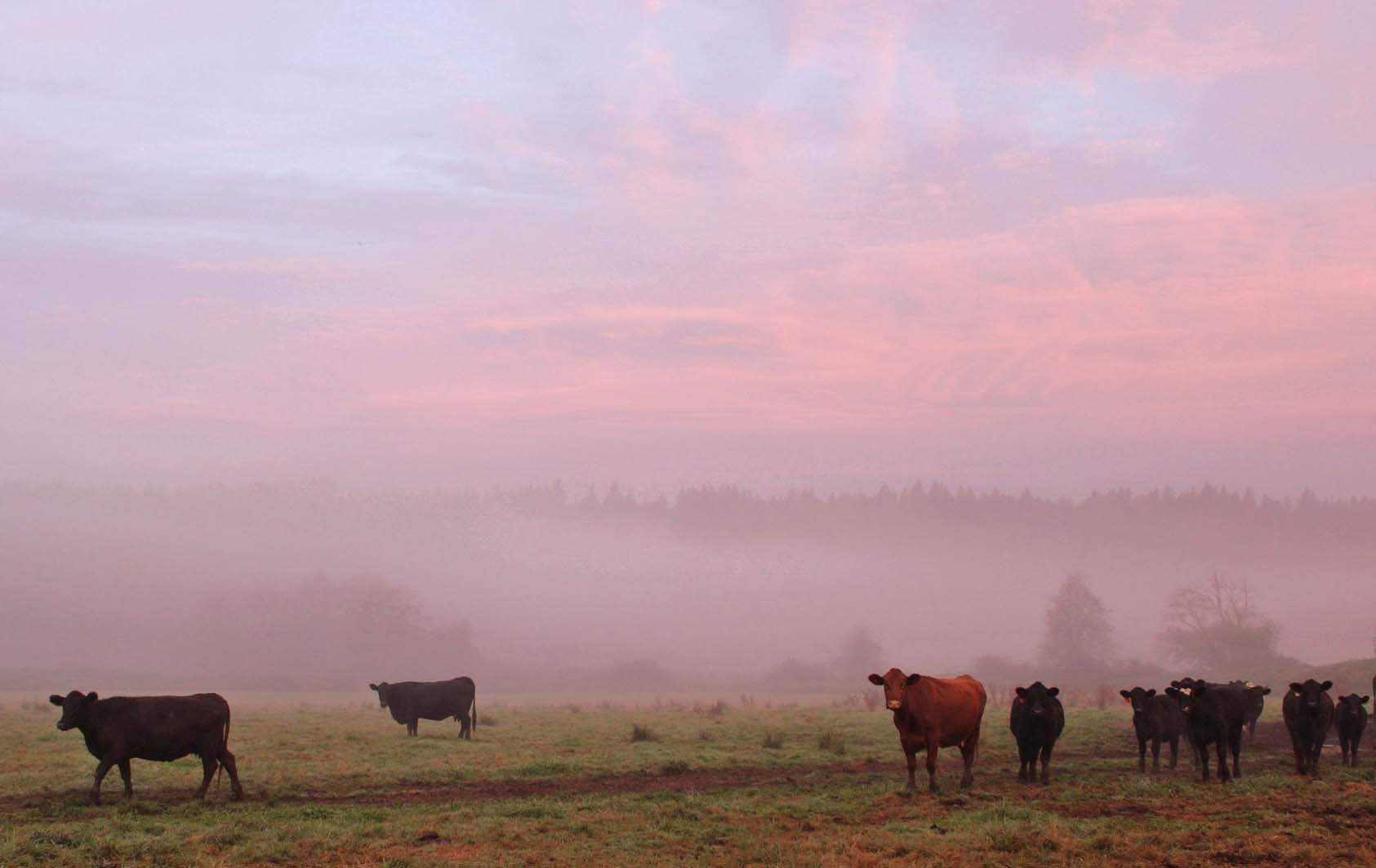
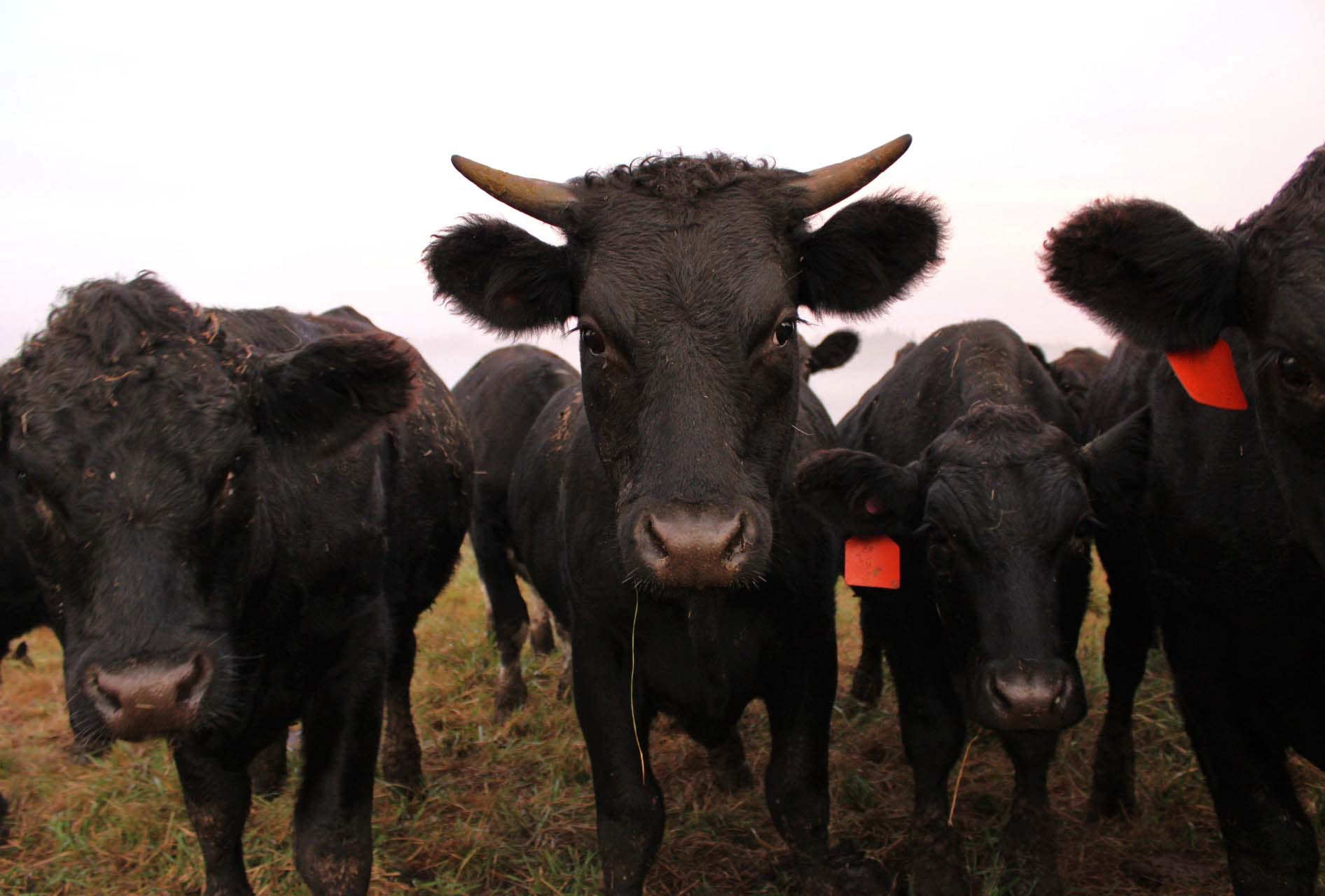
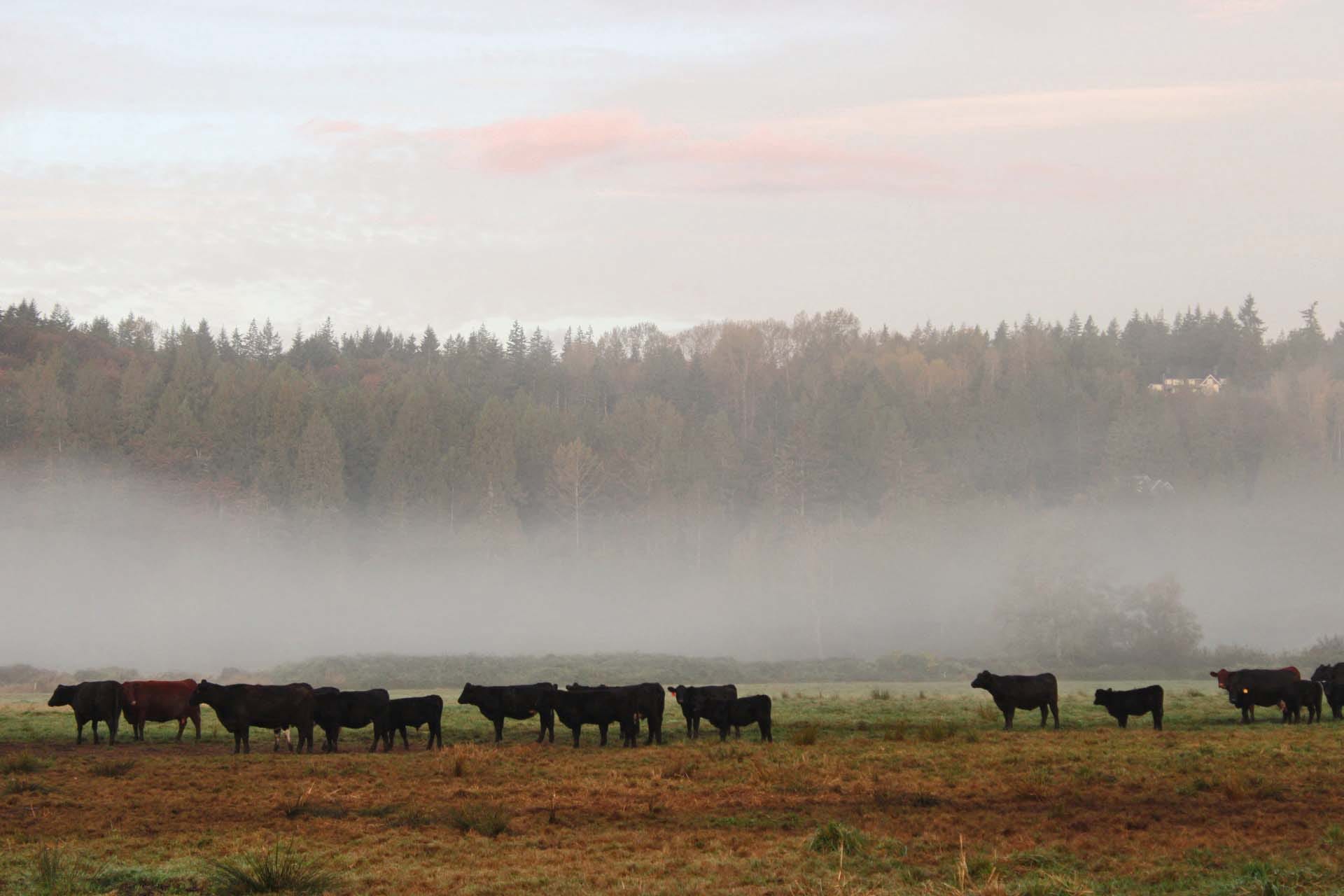
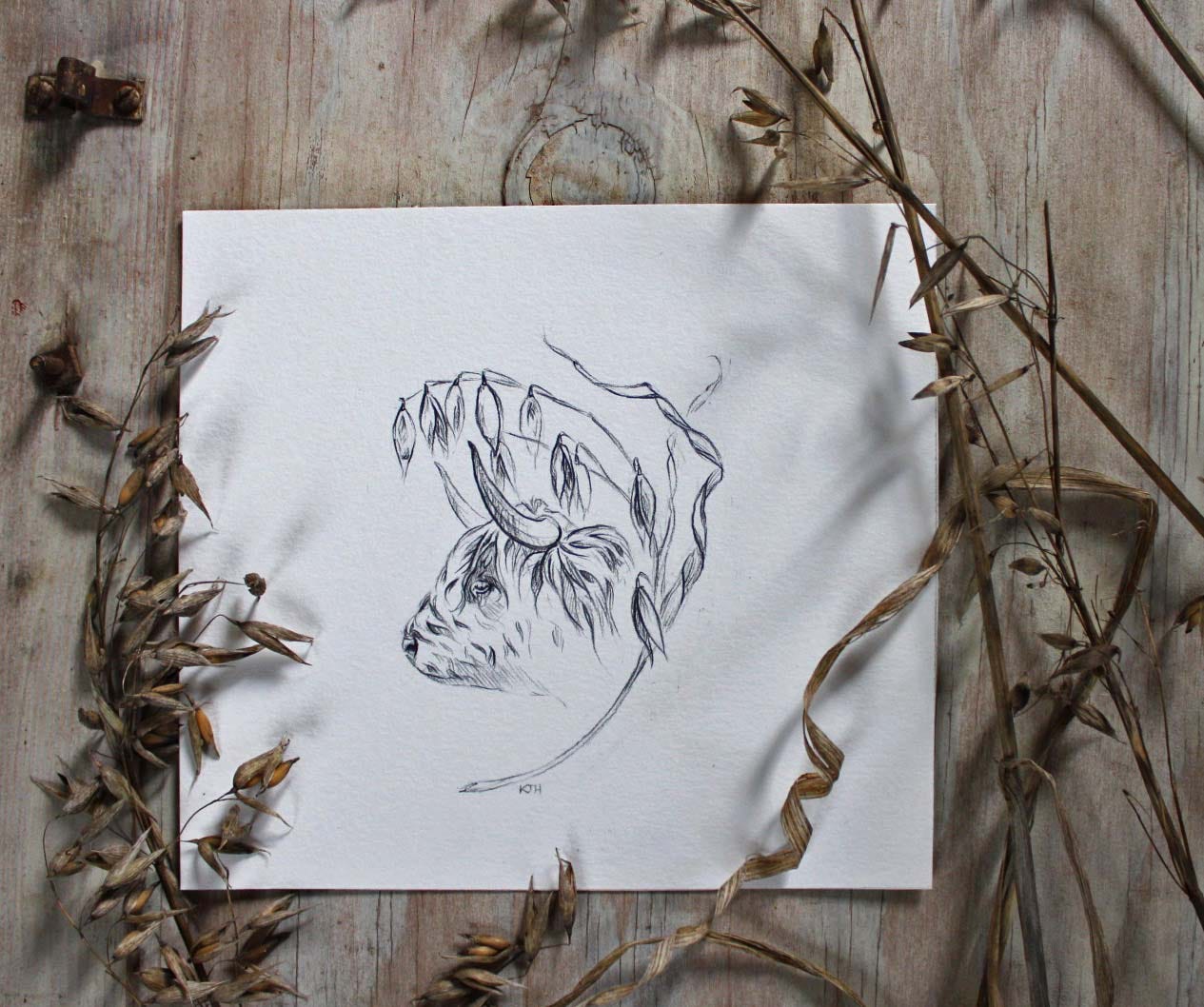
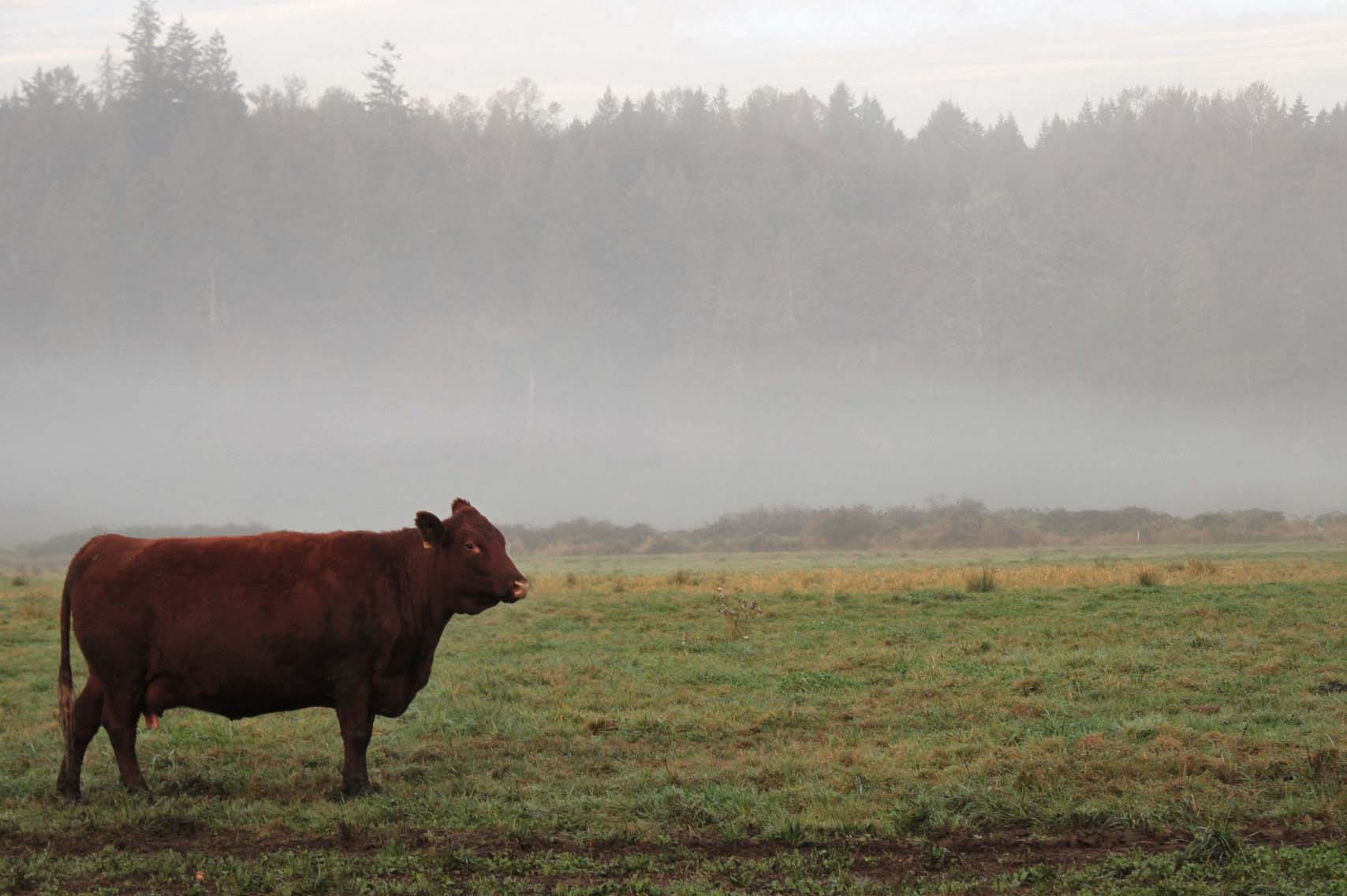
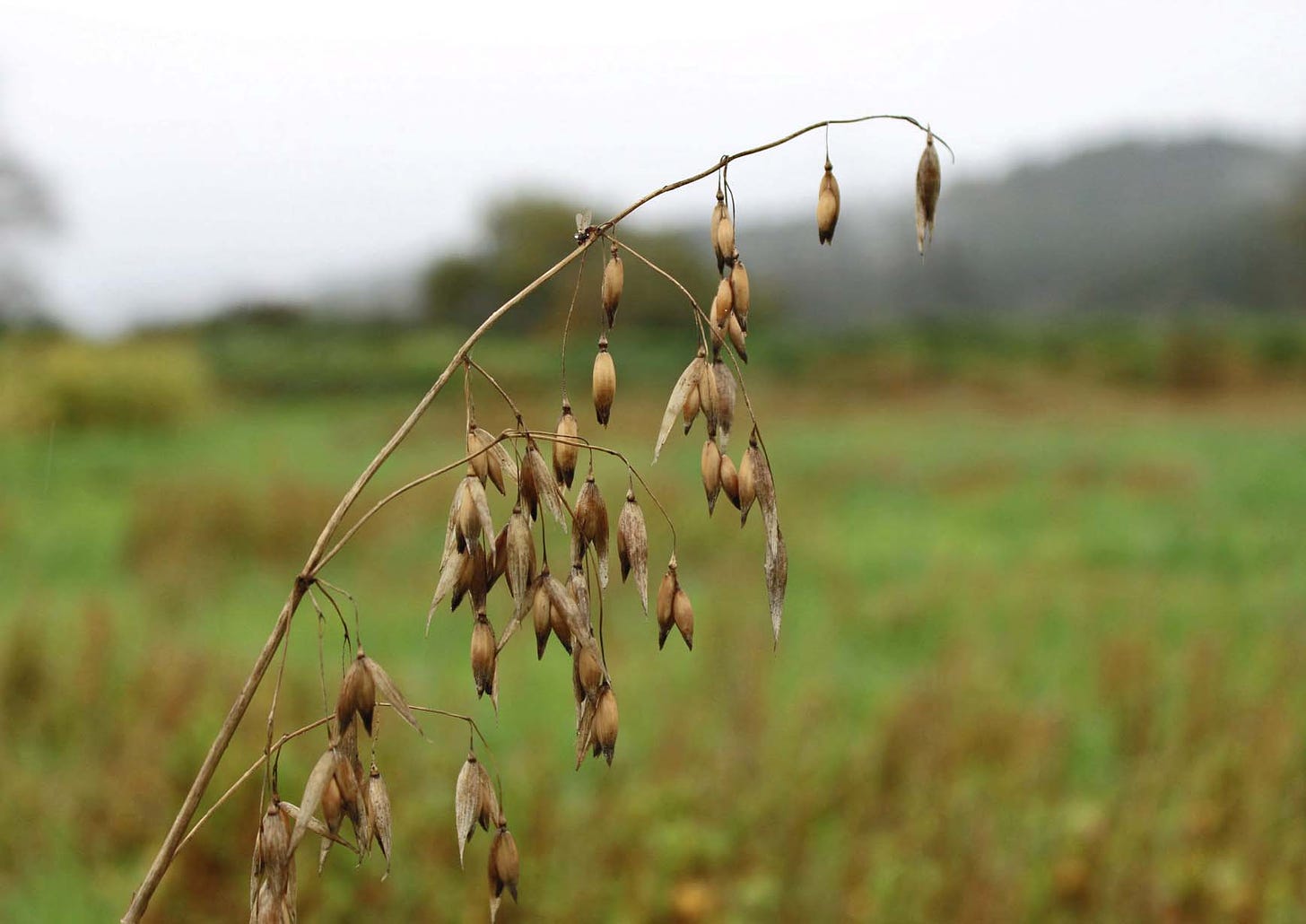
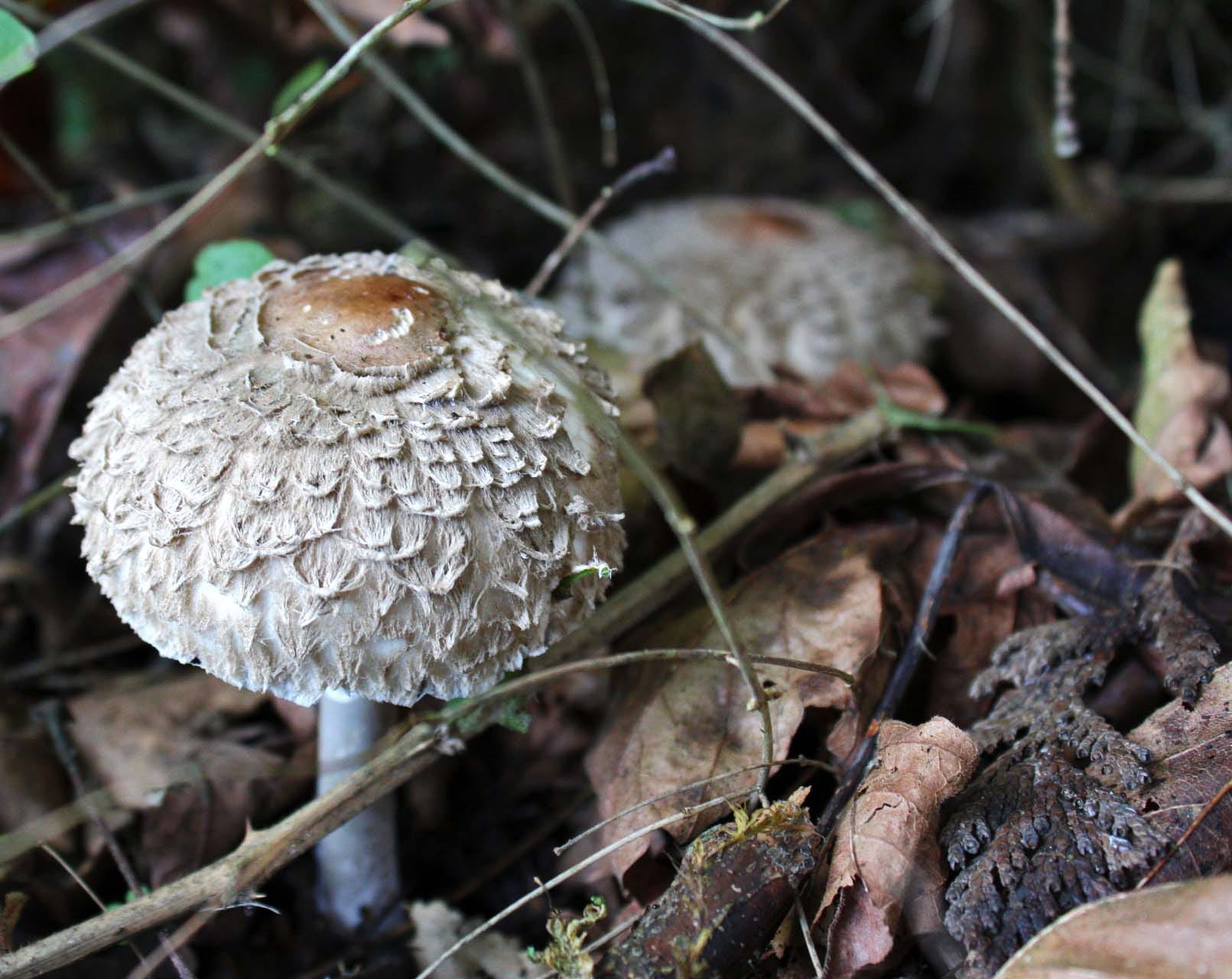
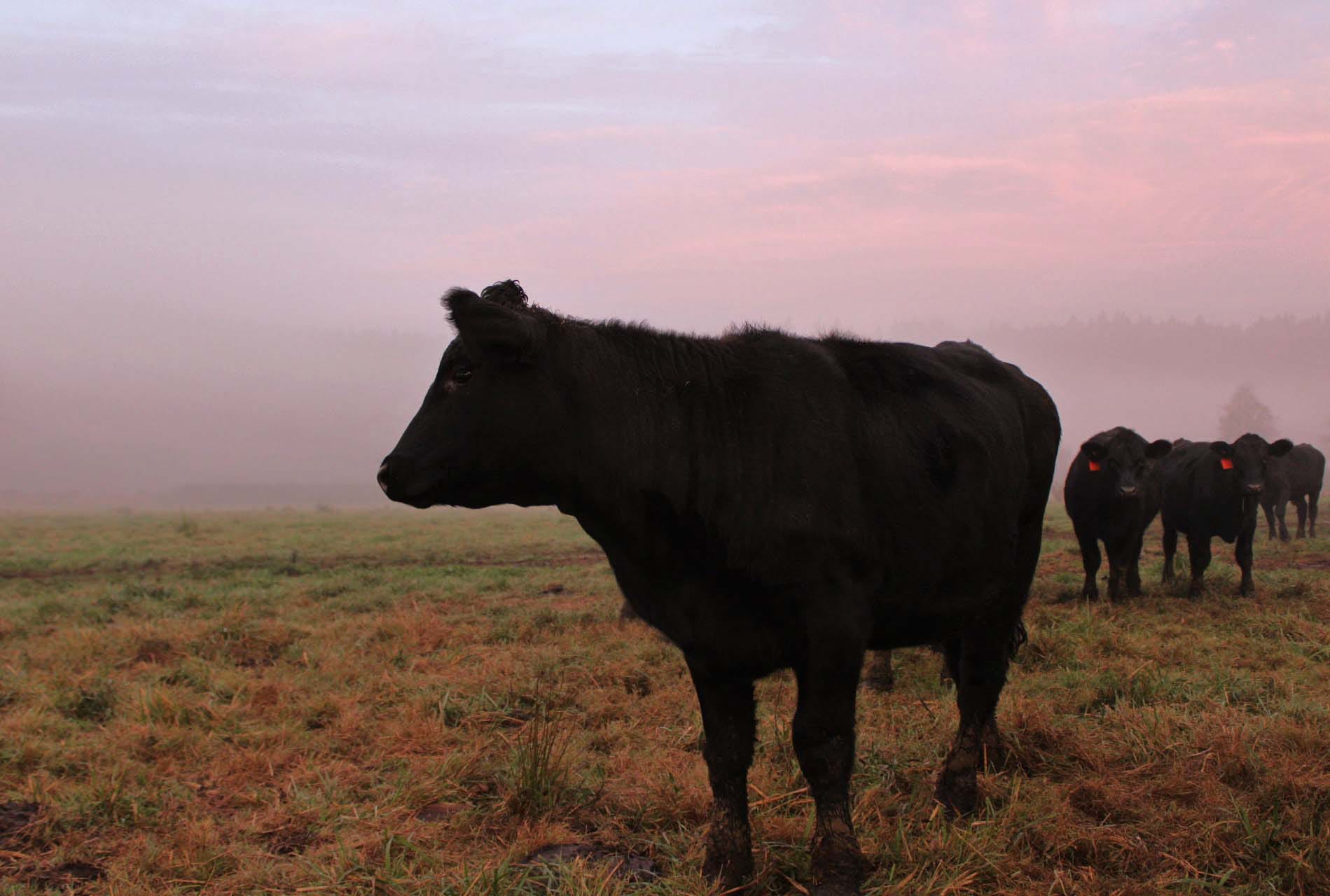
I needed this encouragement to look for "Holy Interruptions" today. Thank you, Kristin. All this that you have put together is just stunning. My heart is full with gratitude for this digital "holy interruption" that you've provided....
We've just had a warm spell - St Luke's little summer - but yesterday I saw a flock of greylag geese (usually the last to arrive before winter) flying high and heading to their wintering grounds from their summer in Iceland. Today is the day to remove the polytunnel covers as the first storm of the season rolls in tomorrow. Winter approaches. I have a pile of books to read, lots of handiwork to do such as making a new coffee table out of an old hardwood kitchen counter and am looking forward to trenching in seasons. Happy Lukismas!